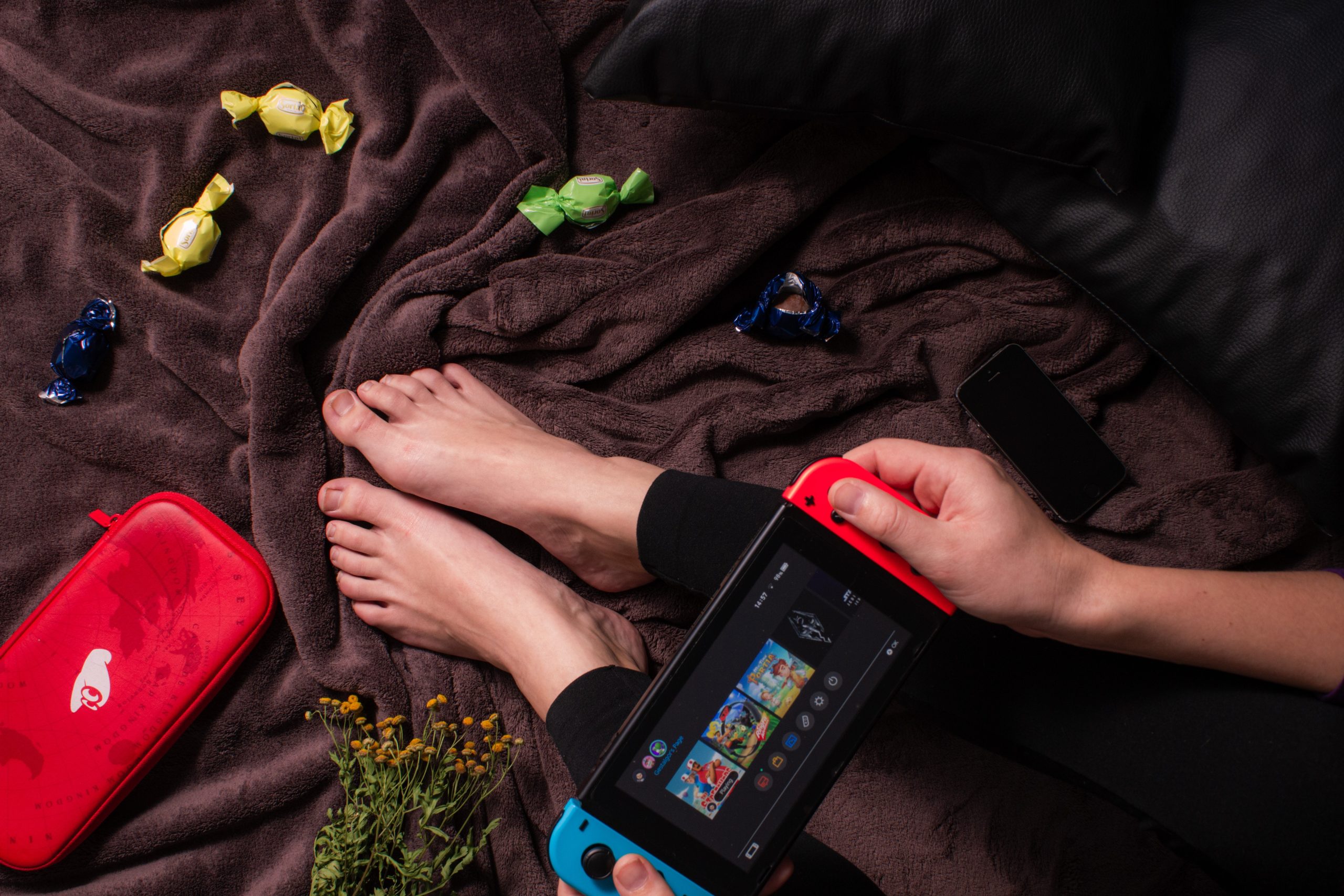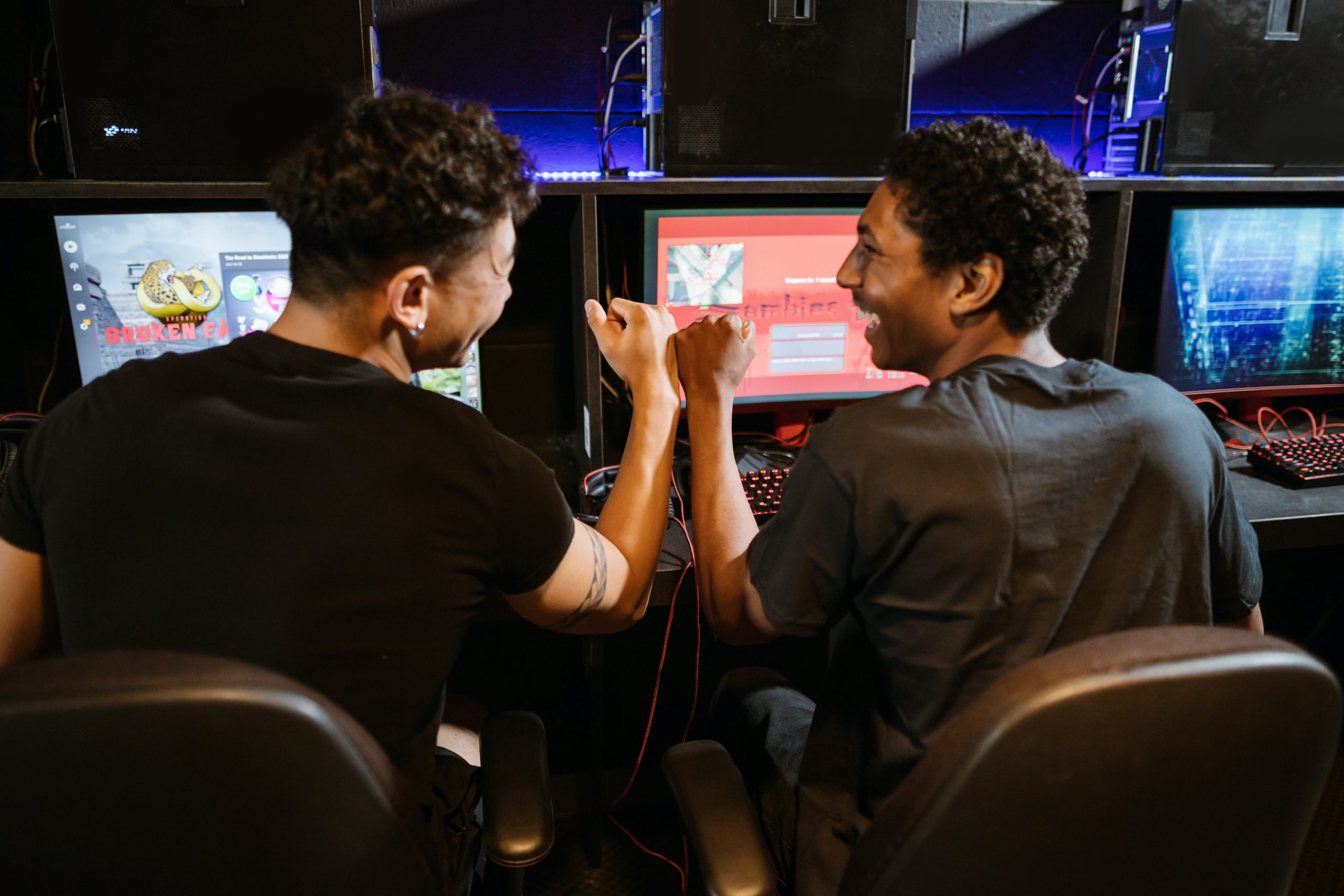The most recent prominent attempt to create a fantastic mobile gaming PC is the Steam Deck. It has a similar appearance to the Nintendo Switch, the current leader in portable gaming, but it is a very different creature that is more powerful, pricey, and complicated. For those who are unaware, this is a portable gaming PC featuring an AMD processor, a 7-inch 1,280×800 display, and 64GB, 256GB, or 512GB of storage.
Given the quick evolution of the platform and the selection of compatible titles, it is also challenging to provide a comprehensive assessment of Valve’s portable device. Important features are being added to and changed by OS upgrades, so by the time you read this, some aspects of the user experience might have changed. For instance, Valve just made it simple to install the Chrome web browser through the SteamOS interface.
It won’t be until the steam deck custom boot animations is in more hands that the full extent of feature-enhancing changes and hacks (or problems and limits) will become clear. So think of this as a constantly changing evaluation.
I’ve also been able to install various titles from the Epic Games Store, one of Steam’s main rivals, since this review was first published. It’s not precisely simple, but resourceful gamers are already developing easier techniques and assistance software. The section on the Steam Deck’s desktop mode provides instructions on how to accomplish this.
The short version is that you’ll be primarily impressed… and occasionally disappointed if you’re the kind of PC gamer who rushed online to preorder the Steam Deck during its brief first-wave delivery window. However, if you’re hoping for a gaming experience that’s as simple to pick up and play as a Nintendo Switch, search elsewhere.
Just a quick reminder: If you didn’t get in on this first wave, Valve is currently accepting reservations with a $5 deposit for delivery “after Q2 2022.”
I had a terrific time using the Steam Deck after spending some time getting acclimated to its peculiarities and figuring out which games and genres performed best on its little screen. After some manual tuning, I was especially pleased with how effectively several keyboard-and-mouse games translated to the built-in touchpads. Battery life and storage space are the two main considerations, but that has always been the case with portable gaming equipment.
 Steam Valve Deck
Steam Valve Deck
For a dedicated subset of WASD gamers, porting the openness, flexibility, and scale of PC gaming into mobile form has long been the proverbial holy grail. The high-tech roadway is littered with the remains of prior endeavors because it has already been tried.
In 2013, there was the Razer Edge. Years before to that, I experimented with gaming on early UMPC handhelds running Windows. A few major PC manufacturers displayed handheld PC gaming prototypes a few years back (that were mostly never seen again). You can still purchase a few pricey, small-screen specialist Windows machines and try them out for gaming. These work with varying degrees of effectiveness. With the state of technology today, there will always be a compromise in relation to full-size gaming laptops or PCs.
The organization that created the wildly popular Steam online game shop and platform, Valve, is the maker of the Steam Deck. In the past, Valve has produced other gaming gear with varying degrees of success and has also produced titles like Portal and Half-Life. Three models with varying storage capacities are offered: 64GB for $399 (£349), 256GB for $529 (£459), and 512GB for $649 (£569).
The lowest option uses an eMMC storage drive whereas the other two use NVMe, and the priciest model etching anti-glare into the glass (like on some iMacs). According to the specs, the eMMC drive won’t be as quick as the other two, and 64GB of storage is just too small for this gadget. I strongly advise purchasing at least the midrange model, even if there is a microSD card slot for adding more storage.
Note that this is not a Windows device when we’re talking about playing Windows games from the sizable Steam library. It runs Apple’s Rosetta for non-M1-native Mac programs and Valve’s Linux-based SteamOS along with a program called Proton that facilitates the operation of many Windows games.
After using it for about two weeks, I can compare it to the first generation of contemporary VR headsets, such as the HTC Vive and Oculus Rift. Yes, customers could purchase them, but in order to be an early adopter, you must be comfortable with trial and error and making decisions on your own. The Steam Deck necessitates a sense of adventure and a fondness for intricate workarounds, just like those first-generation VR headsets.
Because we are accustomed to tinkering and debugging, installing mods and drivers, and replacing or overclocking hardware components, PC gaming enthusiasts are actually the perfect audience for this product. For other games, you’ll need to actively troubleshoot the settings and options so they play well—or at all. Other games, particularly ones that Valve lists as “Verified,” function right out of the box. These are frequently games that resemble consoles and support gamepad controllers, like God of War.
Having a PC small enough to fit in your hand
My 10-year-old stated, “It seems old,” when he first saw the Steam Deck. He has a valid point. Compared to the Nintendo Switch or an iPad Mini, this design is not as optimized and perfected. It unmistakably has a “first-gen” vibe that is clumsy.
Two square haptic touchpads are built inside the body. They can act as a little touchpad in Linux desktop and keyboard-and-mouse games. Beyond that, they have the air of a clever concept waiting to be put into practice. If you, Mr. or Ms. Game Designer, who is reading this, can think of a clever way to use them, they are here.
The remaining controls are comfortable. Nearly every component of a typical game controller—two analog sticks, a directional pad, four face buttons (A, B, X, Y), triggers and bumpers on the left and right sides—is included in one device. On the back, there are four paddle buttons that are mostly used for mapping customized commands.
The D-pad hardly fits in the available space.
You’ll use the built-in controls more frequently even though I was able to connect a keyboard and mouse via Bluetooth (which worked in some games but not in others). The front face is still crowded with many buttons, sticks, and pads; perhaps too many. The D-pad appears to be on the verge of falling off the edge of the device. In contrast to the highly developed ergonomics of an Xbox or PlayStation controller, the analog sticks feel awkward since the touchpads force them up to the top of the controller.
It simply works better for larger hands because of its large size, especially when compared to devices like the Nintendo Switch. I wouldn’t describe its weight of 1 pound, 7 ounces (650 grams) as being very heavy, but the lighter, sleeker Switch weighs just over 1 pound. The Steam Deck is less pleasant to carry for extended periods of time due to its weight and size. It often ended up in a stand or being propped up on a pillow for me.
The OLED Nintendo Switch is adjacent to the Steam Deck.
Several menu options and limited storage
The OS has many options, but it’s not always simple to find the ones you want. Many of these choices, such as the storefront and your game library, are brought up via a Steam menu button on the left side of the screen. A three-dot icon designating a quick-access menu appears on the right side of the screen. Any setting or shortcut you’re looking for might be under one menu button or another, albeit I have no idea why certain things are placed in certain places.
The storage submenu is where you’ll spend the most time. I really want it to be one of the quick menu options that the button to the right of the screen calls up. Instead, you may get to it by clicking the Steam Menu button, navigating to Settings, and then finding Storage. To reach a panel I required to access frequently, I have to press several buttons.
The Steam Deck’s storage area quickly runs out of room.
Contrary to the 64GB and 512GB versions that I’ve been testing, the 256GB version fills up quickly. It doesn’t help that the size of so many of the games I’m interested in playing—Gate Baldur’s 3, GTA 5, Doom Eternal—is north of 70GB and occasionally over 100GB.
Similar to the Nintendo Switch, there is a built-in microSD card port, and I loaded a 256GB card without any issues. But that card also rapidly became full, so I found myself regularly switching games. Every gaming console from the PS5 to the Switch needs add-on storage these days, so it’s not only a problem with the Steam Deck. Traditional gaming PCs have a distinct edge in that regard because they can easily install multiple terabytes of additional storage.
 There’s always an AMD. APU
There’s always an AMD. APU
Taking something as little as the Steam Deck and equipping it to compete with full-size gaming computers or even living room consoles is a genuine challenge. A proprietary AMD APU, often known as a system on a chip, or SoC, that combines CPU and GPU operations, powers the Steam Deck. Yes, there are a lot of three-letter acronyms there. The Van Gogh or Aerith chip are other names for it. It is comparable to what the PlayStation 5 and Xbox Series X employ, and AMD also manufactures the CPUs for those home gaming systems.
You won’t get the same raw performance from this $500 mobile gaming device as you would with a $1,000 or more gaming PC. However, the Steam Deck has a secret weapon: it can play games at a resolution of only 1,280 by 800 pixels. There is plenty of room to achieve respectable frame rates at that lesser resolution with gaming PCs and game consoles striving for full 4K.
Games like Horizon: Zero Dawn, Hitman (2016), or Portal 2—all of which Valve has confirmed to be highly compatible—will launch with the proper graphics settings. Games that have not been specifically approved by Valve may frequently run smoothly, but you might need to change your graphics settings to achieve acceptable performance.
Any game has a performance overlay that you can activate.
There is an on-screen overlay under the power submenu that can be activated to show frame rate, GPU and CPU performance, power usage, and other statistics. This submenu is accessed by pressing the right-side menu button (not the left-side menu button!). When activated, it blocks off a significant amount of the screen, but you can select from several degrees of detail and track performance in real time as you customize the game’s settings.
There is now an FPS toggle available under the power menu, though the actual UI for this changes frequently. When it is turned on, games are limited to 30 frames per second. The cap is 60 fps when it is turned off. According to Valve, VSync is turned on by default and supersedes any in-game choices. VSync involves synchronizing the GPU output with the screen refresh rate, potentially at the expense of performance.
Under SteamOS, some games that included benchmarks also functioned, providing us with yet another perspective on performance. Here are a few of them examinations:
Tomb Raider: Shadow of the Tomb
However, the price of this performance is having to deal with the intrusive built-in fans and a constant flow of hot air from the top vents. Additionally, the battery life is impacted by running so many sophisticated games. There is only a 40-watt-hour battery, but the 400-nit screen operates at 60Hz and has a reduced 1,280×800 pixel resolution, which is helpful.
Continual software and bios updates, brightness and detail settings, the games you play, the brightness of the screen, and other factors can all have an impact on battery life. You don’t necessarily need to save and exit a game in order to preserve battery life for later by pressing the power button on the top edge of the device. This suspends the gaming session, freezes your game state, and puts the system to sleep.
The battery completely discharged in roughly two hours while playing No Man’s Sky at high detail settings and with adaptive brightness enabled on the system. I got around that by playing GTA 5 despite Valve’s claim that many games take four or more hours to complete.
The Steam Deck ran for almost seven hours in desktop mode while streaming video through the Chrome browser (similar to the battery tests we do on laptops and tablets).
You’ll need to pay close attention to your battery life unless you’re playing low-intensity games. While playing, pop-up notifications informed me that the battery was becoming low at 10% and 5%. When utilizing the supplied AC adapter, I discovered that the battery took roughly two hours to fully charge from empty.
On the desktop in the meanwhile…
Even though this isn’t a Windows PC, when you enter SteamOS’ desktop mode, which is essentially the KDE version of Linux, you can access a familiar-looking desktop view. Click on Steam Menu > Power > Switch to Desktop to find it.
There, you can download and run different apps as well as browse the web using Firefox, which is already installed. Keep in mind that if you are unfamiliar with Linux desktops, very little will be intuitive and practically anything you wish to do will need some research or debugging. It works nicely to watch YouTube through a web browser. Chrome installation is simple. But even getting to the on-screen keyboard is difficult to do. It makes me think of all the creative but faulty handheld computers from the 2000s, practically all of which attempted to recreate the keyboard and mouse experience on a portable device.
Yes, you can try installing Windows to make it easier to run non-Steam software. However, due to driver and optimization difficulties, Valve does not advise it, and I have yet to give it a try. I did put Windows on the Atari VCS (another Linux platform with a game overlay), and it undoubtedly increased the device’s applicability to a wider range of users.
Additionally, the Steam Deck can dock via USB-C to an additional display. The 1,280×800 image looks even lower resolution when displayed on a larger screen. It’s also not properly configured for desktop use because it lacks a kickstand or a separate dock. Having said that, I created a stand and used a keyboard and mouse to play a couple games on an external display.
I’ve uploaded the blueprints for you to use on Thingiverse to print your own version of my Steam Deck stand, which is a mashup of this iPad stand.
The ability to run a variety of non-Steam games from desktop mode is another hidden benefit. The most frequently asked about games are those from the GOG and Epic game stores. The same Proton system—which is actually a compatibility layer rather than an emulator—that Steam Windows games utilize should allow you to run Windows games. I eventually managed to get the GOG Galaxy platform to function by installing a Linux aid called MiniGalaxy, and from there, I was able to install and play a few GOG titles. It turned out to be trickier than I anticipated, at least with the prerelease software I was using. Another gaming program for Linux that is compatible with GOG, Epic Games Store, and other stores is called Lutris.
Later, with the help of several Linux gaming specialists, I discovered a much simpler method to install the Epic Games Store. I downloaded the installation.msi file from Epic, but I added the game to Steam as a non-Steam game instead of attempting to run the installer because that option is readily available from the Steam menu while using the desktop version of the software. The detailed step-by-step instructions can be a little challenging, therefore our Gaming on Linux video simplifies them.
After restarting SteamOS, I was able to play the games I had installed by using the standard SteamOS interface. The Epic Games Store launches directly into the Epic platform, including the game shop and your library, and can be found under the “non-Steam” tab of the library. Fortnite, the most popular game from Epic, is currently inoperable due to Linux compatibility concerns. Fortnite should function even if you install Windows on the Steam Deck, though that may change in the future.
Since the Steam Deck’s controller wasn’t properly detected, even if games loaded up perfectly, I haven’t had much success with cloud gaming, such as the Xbox Cloud Gaming service. That problem, according to Valve, will be resolved by a subsequent Chrome patch.
What games am I permitted to play?
There is now a lot of pencil writing. The best source for current information on what has been thoroughly validated, what works quite well, and what won’t function at all is ProtonDB, which details compatibility for Steam titles in SteamOS via Proton. Many multiplayer games, including those with built-in anti-cheat software, aren’t now supported by Steam Deck, but that could change in the future.
Only 23 of my Steam library’s roughly 400 games are now categorized as “Great for Deck,” despite the fact that many of the non-Verified titles I played performed brilliantly.
I played a wide range of both new and old games, including both those that required a gamepad and those that could only be played with a keyboard and mouse. Although some possibilities were lost, several encounters exceeded my expectations. Some games, including my current favorite, Inscryption, wouldn’t run unless I forced the compatibility tool’s use in a properties menu. Halo Infinite, which seems to be the recent first-person shooter you’d want to play on anything like this, wouldn’t launch for me. At first, GTA 5 crashed and gave me issues, but when I tried it again a week later, it worked after a clumsy setup procedure.
Hades, which looks to be ideal for portable gaming, and No Man’s Sky, which I hadn’t played in years but also felt was truly designed for mobile gaming, were probably the games I had the most joy playing overall.
Here are some quick observations and reviews of some games I played on the Steam Deck. By the time you read this, the status of each game as playable, verified, unknown, etc., may have changed, and some of the problems I encountered may have been resolved by then. I’ll update this review as the system software develops, new games are confirmed, and more incompatibility issues are found.
DEAD LIFE 2
One of the most recent titles I tested is categorized as unknown in the compatibility matrix for the Steam Deck. Thankfully, it worked fairly well. I’ve played this before on the PC using a gamepad, keyboard, and mouse, and the Steam Deck controllers here work flawlessly.
For the best experience in a non-optimized game, you’ll need to explore and experiment with the settings. I had to down the detail levels to a minimum in order to maintain a steady frame rate, but by doing so, I was continuously able to run across the game’s parkour-friendly metropolis with a frame rate of approximately 50.
The game would periodically stutter and glitch, though, and it was the only one I played that triggered a serious crash, freezing the Steam Deck, and then forcing a reboot. But so far, I’d still classify this as a success.
 Hades
Hades
Undoubtedly one of my top overall Steam Deck experiences. The game seems like a fantastic combination between hardware and software, looks fantastic, and plays fantastically. A pricey portable PC is overkill for a game like this because you can play it on a Nintendo Switch, PS5, or Xbox Series X (where it is included in the Game Pass subscription) and because the on-screen font is still occasionally small.
I was eager to play a CRPG, also known as a traditional PC-based roleplaying game. This is an excellent illustration of a game that was made exclusively for keyboard and mouse input and does not have official gamepad support. It is presently listed as “playable” on Steam Deck, and it was in fact more playable than I had anticipated.
For cursor movement, the dual touchpads were essential, and some, but not all, of the keyboard shortcuts I need were mapped to the face buttons and triggers. I was able to designate particular commands to the four paddle buttons on the rear by going into the game’s Steam interface. Up until this point, those buttons have largely been underused.
After some command remapping, everything went rather smoothly. Reading the game’s dense text on the little screen was the largest problem I encountered, which will persist for PC titles made for 15- or 17-inch monitors.
Gloomhaven
Just go on to the next game if you are unfamiliar with Gloomhaven, the reigning monarch of outrageous tabletop board games. This is a really good recreation of the physical game for the rest of us. It can only be played with a keyboard and mouse, but I found that, with just minor adjustments from me, the controls transferred perfectly to the Steam Deck buttons, triggers, and pads. You can take your time positioning the mouse cursor and activating your card effects because this is a slower, turn-based game.
Frontier: Zero Dawn
Yes, it performed well. This is one of the games Valve touts as excellent for Steam Deck. The built-in benchmark for the game allows you to view the actual performance above. Although it takes some getting used to the Steam Deck’s differing placement and size of the controller’s buttons, sticks, and triggers compared to the more used PlayStation controller, third-person action and stealth titles feel like they are a good fit for it. Additionally, there is a noticeable difference between playing this game at 1,280×800 with frame rates in the 30s and 40s and playing it at 4K at 60fps, as is possible on a PS5.
Google of War
Another well-known Steam Deck title, Horizon seems comparable to it in its superb porting to handheld devices. Even though it was a bit difficult to hold the large controller during some of the tremendously long fight sequences, the game didn’t stutter or lag, and the majority of the on-screen text was legible.
In No Man’s Sky
One of the biggest surprises for me was actually this. A game that I hadn’t played much since it was first released years ago, but I thought it could fit well with this handheld format. The game played well even with the visuals on high, but some control tweaking was necessary to make it playable. Fortunately, games allow for a lot of customisation, so you can assign necessary keyboard inputs to things like the four back paddle buttons. I originally thought No Man’s Sky was tedious and unsatisfying. I played it until the battery ran out while using it as a handheld game while sitting down.
3th Baldur’s Gate
This keyboard-and-mouse role-playing game (CRPG) is quite similar to Pathfinder and is still in prerelease beta stage more than two years later. Although the tiny lettering was difficult to see, Pathfinder’s relatively straightforward combat made game simpler to play on a small screen. However, once more, I had to map several buttons on a case-by-case basis in order to get the commands I required.
40,000 Warhammer: Inquisitor
Don’t criticize me. This is essentially a Diablo clone placed in space, which is something I adore in gloomy sci-fi RPGs. The on-screen writing was little, as I encountered it repeatedly (only certain games have the option to increase text and caption size), but other than that, this controller-friendly game performed admirably at high detail settings. I loved adapting this game into handheld form and played it a ton, just like Diablo 3 is probably my most-played Nintendo Switch game (it’s a terrific time-killer when you’re traveling).




